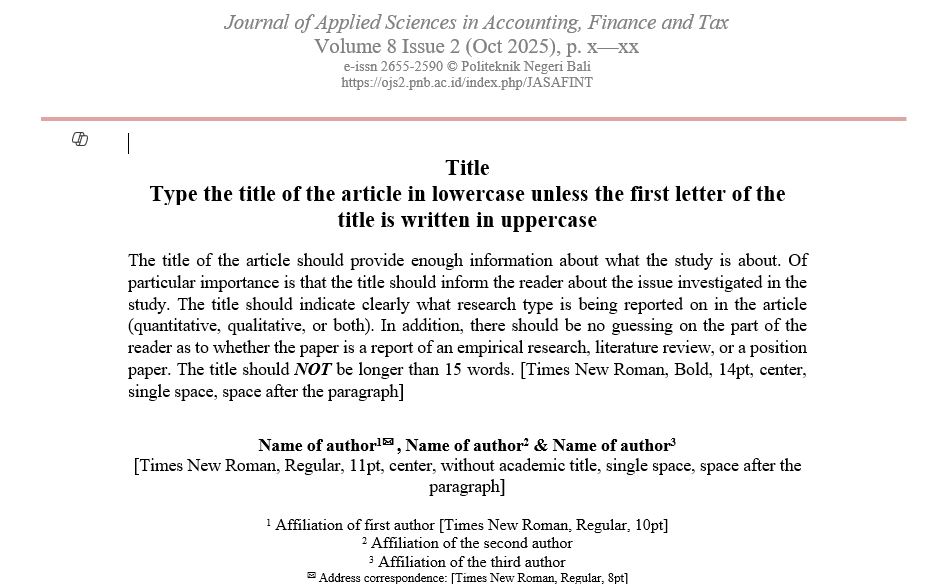Performance analysis of the Village Credit Institution (LPD) of Tanjung Bungkak Traditional Village using the balanced scorecard approach
DOI:
https://doi.org/10.31940/jasafint.v7i2.127-141Keywords:
balanced scorecard, customer perspective, performance, financial perspective, internal business process perspective , learning and growth perspectiveAbstract
The balanced scorecard is a tool for measuring company performance from financial and non-financial aspects through four perspectives including the financial perspective, customer perspective, internal business process perspective, and learning and growth perspective. This research uses a quantitative descriptive approach carried out at the Tanjung Bungkak Traditional Village LPD located in Denpasar with the aim of knowing the performance of the Tanjung Bungkak Traditional Village LPD seen from the four perspectives in the balanced scorecard. Data collection techniques used include documentation, observation, interviews and surveys. The results of the analysis show that the performance of the Tanjung Bungkak Traditional Village LPD, when viewed from a financial perspective, is not good with the calculation of Cash Ratio (CR) and Loan to Deposit Ratio (LDR) categorized as quite good, Debt to Equity Ratio (DER) categorized as good, but Operations Cost to Operating Income (BOPO), Non-Performing Loans (NPL), Return on Assets (ROA) and Return on Equity (ROE) are categorized as poor. From a customer perspective, LPD's performance is assessed as good from the results of customer retention and customer satisfaction calculations with a percentage of positive statements reaching 93%. From an internal business process perspective, LPD performance is in fairly good criteria from the results of calculations of the innovation process and operational processes using service cycle effectiveness. The learning and growth perspective shows good LPD performance from calculating employee retention, employee productivity and employee satisfaction with the percentage of positive statements reaching 83%.







